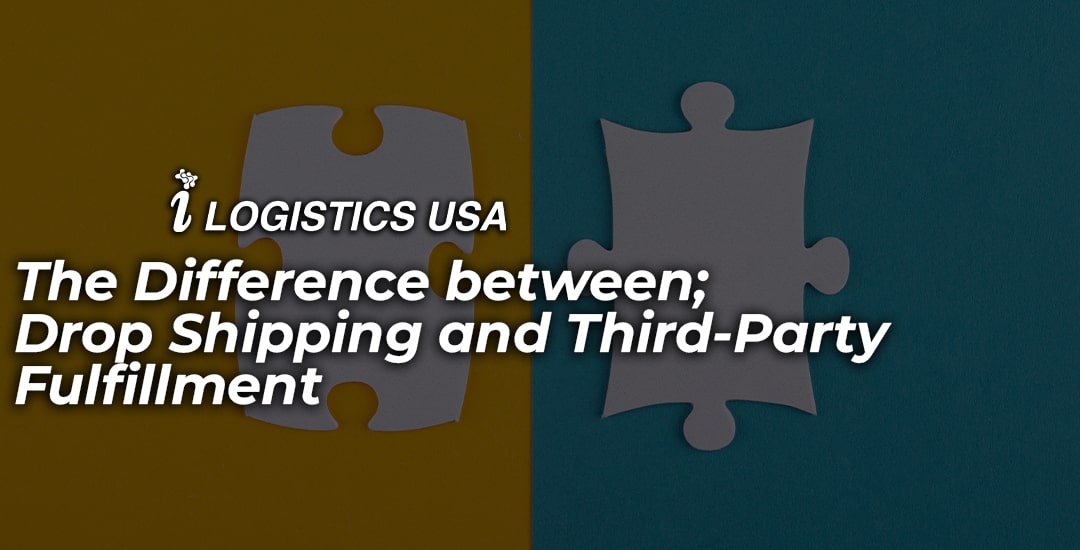The Difference between; Drop Shipping and Third-Party Fulfillment
Defining Drop Shipping:
Drop shipping is slightly different insofar as you as the seller offer products for sale that you don’t purchase ahead of time. You contract with the manufacturer to drop ship orders directly to your customers. With this system as the seller, you don’t have to bear the burden of paying for inventory ahead of time.
The trade-off here is that the manufacturer will charge you a higher wholesale price for every item you purchased individually. The reason for this is that they act as the warehouse and they fulfill individual orders instead of shipping to you as the seller in bulk.
So, you as the seller don’t have to purchase any product ahead of time, but on your website, it looks like you’re selling your products, products you already have physically. As the seller, you handle marketing and customer service in this arrangement. In exchange, the manufacturer functions as the warehouse, and they handle shipping services.
For dropshipping you place items offered by one or more drop shipping companies on your website for sale. If you have three types of products, you want to contribute, and three different drop shipping companies only provide them you can offer all three and merely arrange contracts with all three companies. Customers will visit your site and place an order. Once they have paid for the product, you forward that order to the manufacturer and the manufacturer processes that order and ships directly to your customer.
This particular option is an excellent arrangement for people who don’t have the capital to purchase inventory or sellers who don’t want to invest in storage and logistics. It is also a beneficial system for any seller that wants to offer a more extensive selection of products through the same website. If, for example, you want to try a new product and see if it sells, you don’t have to justify the cost of purchasing a large amount of inventory with this agreement. Instead, you can offer it as a trial, and if it sells well, then you can change your shipping method if necessary.
The Drop Shipping Cycle:
With this system, you add a product to your online store first and foremost. Customers visit your store, and they purchase the product. The customer paid you for the product and the shipping cost. You place the subsequent order with your supplier. Your supplier packages and drop ships the item to your customers.
There are pros and cons to each. The most significant advantage associated with the fulfillment service is the reduced cost for products long-term, but the biggest drawback is the necessity of extra capital to pay for more significant amounts of products upfront which can be particularly risky if you don’t know how well something will sell. By comparison, the biggest pro associated with drop shipping is you don’t have to take on upfront costs, and you don’t have to take on as much risk if you are trying out new products. Similarly, you have the option of selling multiple products that are not offered by the same company, but you also have to worry about added cost and logistics.of letting a contract or an agreement come to an end and then switching to the other shipping method.
Defining Third-Party Fulfillment:
Third-party fulfillment is when you outsource your fulfillment options to another company. That company will handle your store merchandise, they will pick up orders and pack them, and they will handle all of the logistics of shipping.
What is most important to understand is that with a third-party fulfillment service, the seller buys their inventory in bulk, and then they contract with a fulfillment warehouse to handle every aspect of fulfilling an order. This is an excellent option for sellers who don’t have warehouses themselves but would still like to keep inventory.
With this type of solution, you purchase, as the seller, your products in bulk from your distributor or your manufacturer. You list all of the products you have to offer on your online store, but before you can list a product for sale, you have to deliver those products to the third-party fulfillment company. At that point, when buyers place orders, you contact the third-party company, and they process the request, pack up the product, and arrange for delivery to your buyer.
If you have an eCommerce store with enough capital to purchase inventory ahead of time and maintain it, this is the perfect solution. It’s also better for sellers who are confident that they can sell their product quickly and things won’t just sit there. Anyone who wants to outsource their storage and would also benefit from this option.
The Fulfillment Cycle:
With this solution, you buy inventory first and foremost and give it to the company. You have to purchase your inventory wholesale or from a manufacturing company. Then you deliver them to the third-party fulfillment provider. At that point, you can list the products in your online store. Customers visit your store, order a product, and pay for it. When that is done, the information is related to the Fulfillment service provider. The company will pick up the items from the warehouse, pack them, and ship them to your customer.
At iLogistics USA we receive your merchandise organized and classified in our warehouse, we work on your fulfillment orders so that all your customers receive in the shortest time possible, see what we can do for you by calling 1-305-909-0400 and as always, a team member will be happy to assist you.




